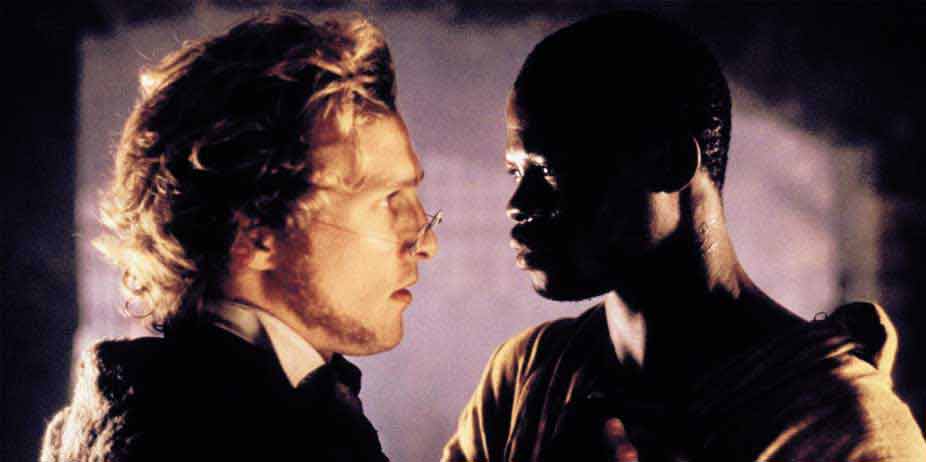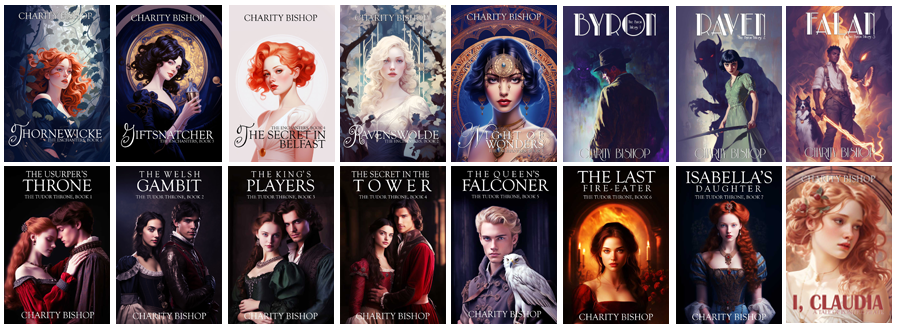Amistad (1997)
Few but die-hard historians knew the tale of La Amistad, and the trial that ripped apart the American courts in the early eighteen hundreds, until director Stephen Spielberg thought it worthy of immortalization in film. The result is an at times tedious but ultimately powerful depiction of the friction between the North and South over slavery in the years preceding the Civil War.
When a transport ship is found adrift in the Atlantic with only slaves aboard, the rest of its crew apart from two members slaughtered at the hands of "black property," an immediate power struggle results to claim ownership and jurisdiction. Ten year old Queen Isabella II of Spain (Anna Paquin) insists that the slaves are the property of her Spanish ships and demands their immediate return. The navy officers that ran the ship down and seized control of it state that due to the governing laws of the seas, the slaves belong to them as bounty. The American government wants the slaves executed for murdering their captors, and the Abolitionists desire the slaves returned to Africa and given their freedom. At the head of the abolitionist movement is Theodore Joadson (Martin Freeman), a freed southern slave who is acquainted with John Quincy Adams (Anthony Hopkins).
Attempting to interest the former president in taking sides in the case, Joadson is forced to make do with the passionate but ultimately money-motivated Mr. Baldwin (Matthew McConaughey) to defend their case. The only way of winning is to persuade the judge and jury that the slaves were not born on a Cuban plantation as the Spanish insist, but come directly from Africa. But the language barrier prevents him from communication with Cinque (Dimon Hounsou), the chosen leader. To make matters worse, due to threats from the Southern states, President Martin Van Buren (Hawthorne) changes out the empathetic judge for a younger, more ambitions man (Jeremy Northam). Baldwin is fighting an uphill battle, but one that will ultimately prove that all men deserve to be equal and free in the United States, and one that will bring even the most reluctant participants to their side.
Historians have quibbled on minor points when it comes to this film, but for the most part it represents a trial that changed the face of slavery forever, since it took a direct stand for the abolitionist movement. Slavery had already been outlawed in England at the time and was creeping across the Atlantic, but it was so engrained into the South that its abolition threatened the welfare of the plantations. The film does a good job at presenting multiple sides and causing us to understand why certain decisions were made throughout the course of the three trials. Its representation of historical figures is also quite remarkable. One gets an honest feel for the lives of those involved, as well as a glimpse into the political struggles of the time period. It also has one of the most horrific depictions of slavers that I have ever seen: human beings packed like sardines into small quarters, the ill starved and thrown overboard. You can see why the Africans rose against their captors.
It is not a feel good film in the sense that it's happy viewing, but it is compelling viewing. There is a distinction, and this is the kind of story that needs to be told. Early in the trial, a Christian places a Bible into the hands of one of the prisoners, who studies the drawings inside until he begins to understand them. This formerly violent man becomes quiet and studious as he explains to Cinque his interpretation of the sketches. His understanding is poignant and accurate, overshadowed with his own personal experiences. Of course, he does not understand the concept of salvation because no one has explained it to him, but the scene is profoundly touching, an indication that God can reach out across language barrios to touch the hearts of men. Humorously, the slaves believe that the Christians praying for them outside the prison are "unhappy" because of the seriousness of their expressions. It's not a film for children due to its intense thematic elements, but adults and teens will benefit from a viewing, if only as a reminder of the worth of human life.
Sexual Content
A
woman dies in childbirth. Her naked infant is passed among the occupants
of the berth. Cinque is shown from a distance dumping her naked body
into the sea. Fifty or so slaves are chained and dropped overboard to
drown. All of them are nude, but you only see quick, often obscured or
shadowed images. The men wear only loincloths in some scenes.
Language:
There's one mild profanity.
Violence:
Scenes of the revolt aboard the ship contain gruesome
slaughter, but even more disturbing are the flashbacks of slave mistreatment.
Food is withheld from some of them. A
woman dies in childbirth. Fifty or so slaves are chained and dropped overboard to
drown. The men wear only loincloths in some scenes.
Other:
Slavery.

